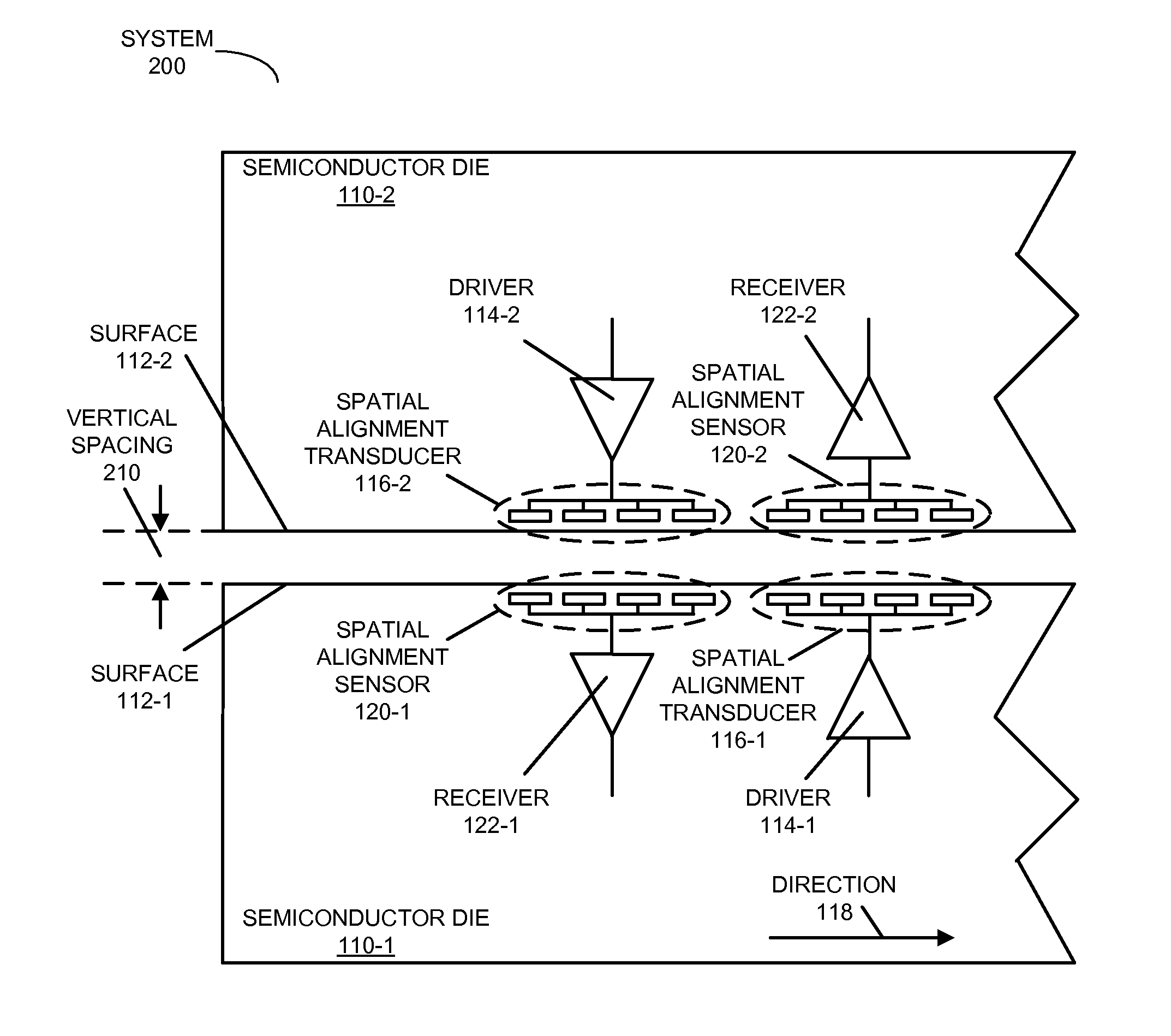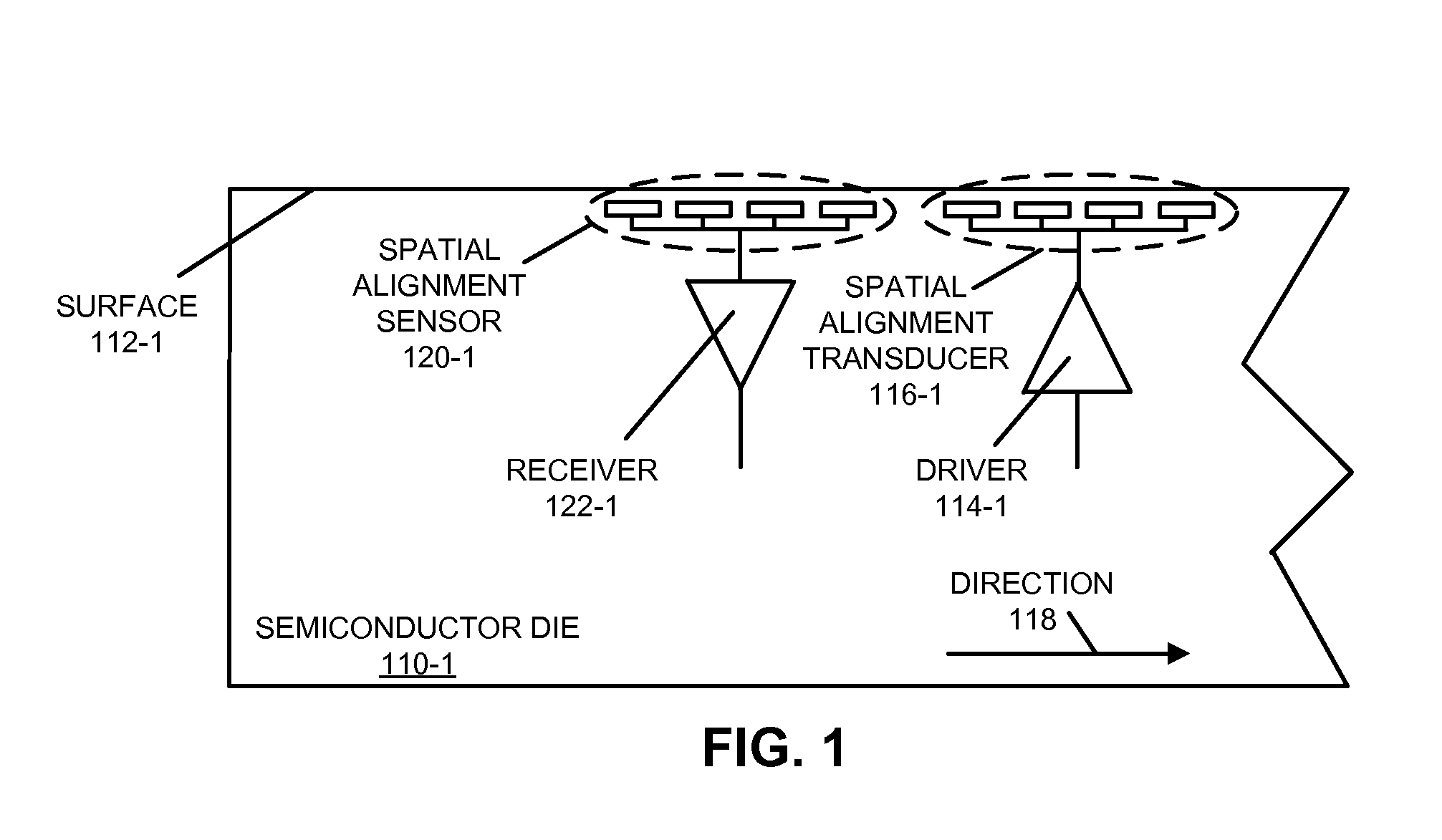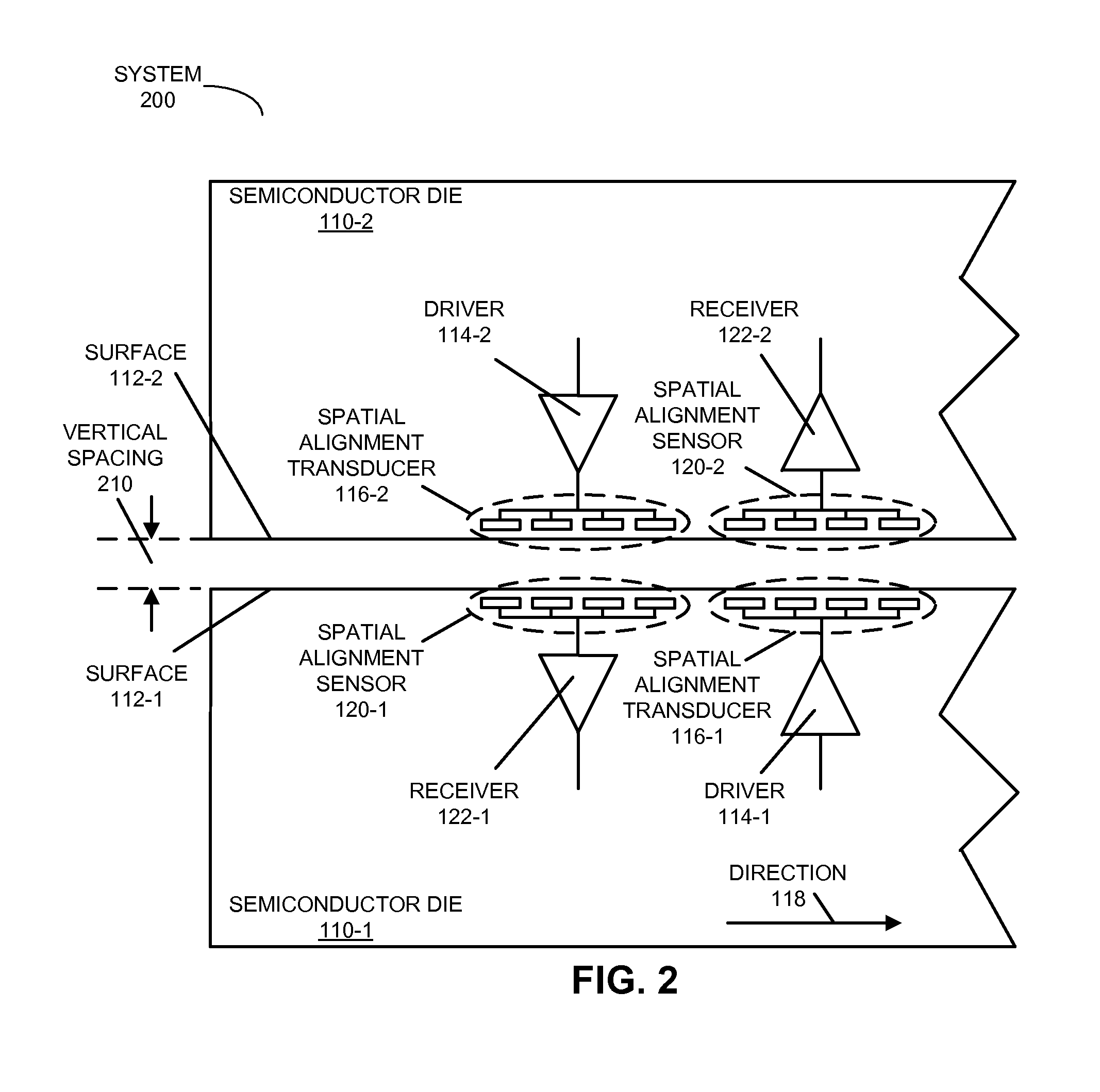Determining alignment using a spatially varying charge distribution
- Summary
- Abstract
- Description
- Claims
- Application Information
AI Technical Summary
Benefits of technology
Problems solved by technology
Method used
Image
Examples
Example
[0028]Note that like reference numerals refer to corresponding parts throughout the drawings. Moreover, multiple instances of the same part are designated by a common prefix separated from an instance number by a dash.
DETAILED DESCRIPTION
[0029]Embodiments of a semiconductor die, a system that includes the semiconductor die and another semiconductor die, and a method for determining the spatial alignment between the two semiconductor dies are described. This semiconductor die includes a driver, and a spatial alignment transducer that is electrically coupled to the driver and which is proximate to a surface of the semiconductor die. The driver establishes a spatially varying electric charge distribution in at least one direction in the spatial alignment transducer, thereby facilitating determination of a spatial alignment between the semiconductor die and the other semiconductor die. In particular, a spatial alignment sensor proximate to the surface of the other semiconductor die may ...
PUM
 Login to view more
Login to view more Abstract
Description
Claims
Application Information
 Login to view more
Login to view more - R&D Engineer
- R&D Manager
- IP Professional
- Industry Leading Data Capabilities
- Powerful AI technology
- Patent DNA Extraction
Browse by: Latest US Patents, China's latest patents, Technical Efficacy Thesaurus, Application Domain, Technology Topic.
© 2024 PatSnap. All rights reserved.Legal|Privacy policy|Modern Slavery Act Transparency Statement|Sitemap



